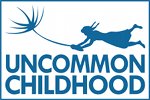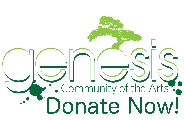A Visit to the Gibbon Rehabilitation Project & Bang Pae Waterfall, Phuket
October 19, 2012 in Asia, blog, Thailand, Travelogue
The first sound we heard was their singing:
A high, haunting whistle-wail that rose and fell in waves through the jungle canopy. “They sound so much different than the howler monkeys, Mom,” one of the boys commented, “They sound like they’re singing.” It turns out, that’s exactly what the gibbons were doing.
The Gibbon Rehabilitation Project is located in the Bang Pae Waterfall National Park on the east side of Phuket. A large tract of land has been set aside for the rehabilitation and reintroduction of gibbons into the wild.
The gibbons find their way to the project through a variety of means but the thing they all have in common is having been misused by humans at some point. There’s a thriving poaching industry that sells gibbons into the tourism industry, or as pets. On Phuket you can get your photo taken with a gibbon on many of the beaches. In some bars and restaurants they serve patrons drinks or cigarettes. They are forced out of their natural patterns and abused.
For every gibbon in captivity it is estimated that nine have been killed, which is why they’re now endangered.
The only way to separate a baby gibbon from its mother is to kill the mama monkey. Poachers shoot the mothers and often the baby doesn’t survive the drop from the canopy to the forest floor. If it does, the family troop will do its best to save the baby and often entire family groups of gibbons are killed to collect one baby monkey to sell into captivity.
The Gibbon Rehabilitation Project rescues as many monkeys as it can.
The gibbons are first tested for Hep A & P, Herpes & HIV, among other things. If they are clean, the rehabilitation process begins. If they are not, then they are destined to live out their lives in captivity within the Bang Pae reserve in large, generous cages being cared for by people dedicated to giving them the best, most natural life possible. Those who can be rehabilitated and released into the wild start through a series of steps that will eventually mate them into bonded family groups and give them the opportunity to return to the wild.
Here’s something to think about, as visitors to Phuket, or anywhere else:
any time we have pictures taken with a wild animal and pay a fee, or eat at a restaurant where animals are caged or serving as entertainment, we contribute to the poaching industry and the abuse of these animals. I’ll never walk by a monkey tied to the arm of a “trainer” on the street and not remember that for that one enslaved creature as many of nine others were killed. That’s not my kind of entertainment.
I highly recommend that you spend some time on the Gibbon Rehabilitation Program’s website, especially if you’ve got kids who you’re trying to get educated. It’s a wealth of useful information and there’s even a way for you to participate by “adopting” your own gibbon for a year at a time. You’ll be amazed at how little it takes to be a part of the solution for these beautiful creatures.
We took a shaded walk through the jungle up to Bang Sae waterfall, the biggest of the falls on our island. At only 15 m, they were nothing like the big falls we’ve seen elsewhere, but still very lovely. The Worldschool Adventures boys saw their first bananas and pineapples growing and some elephants in a rubber grove as well.











 RSS - Posts
RSS - Posts


























I love primates! I see on their website that volunteers are needed…I so wish I could go volunteer for a little while. While I’ve never had any major urge to visit Asia, after reading your blog, I’m much more interested. Europe & South America are still higher on the list though! lol
Alice… the man we spoke to there arrived as a volunteer for a month… two years ago! This is a very small project that needs all of the volunteer help it can get!